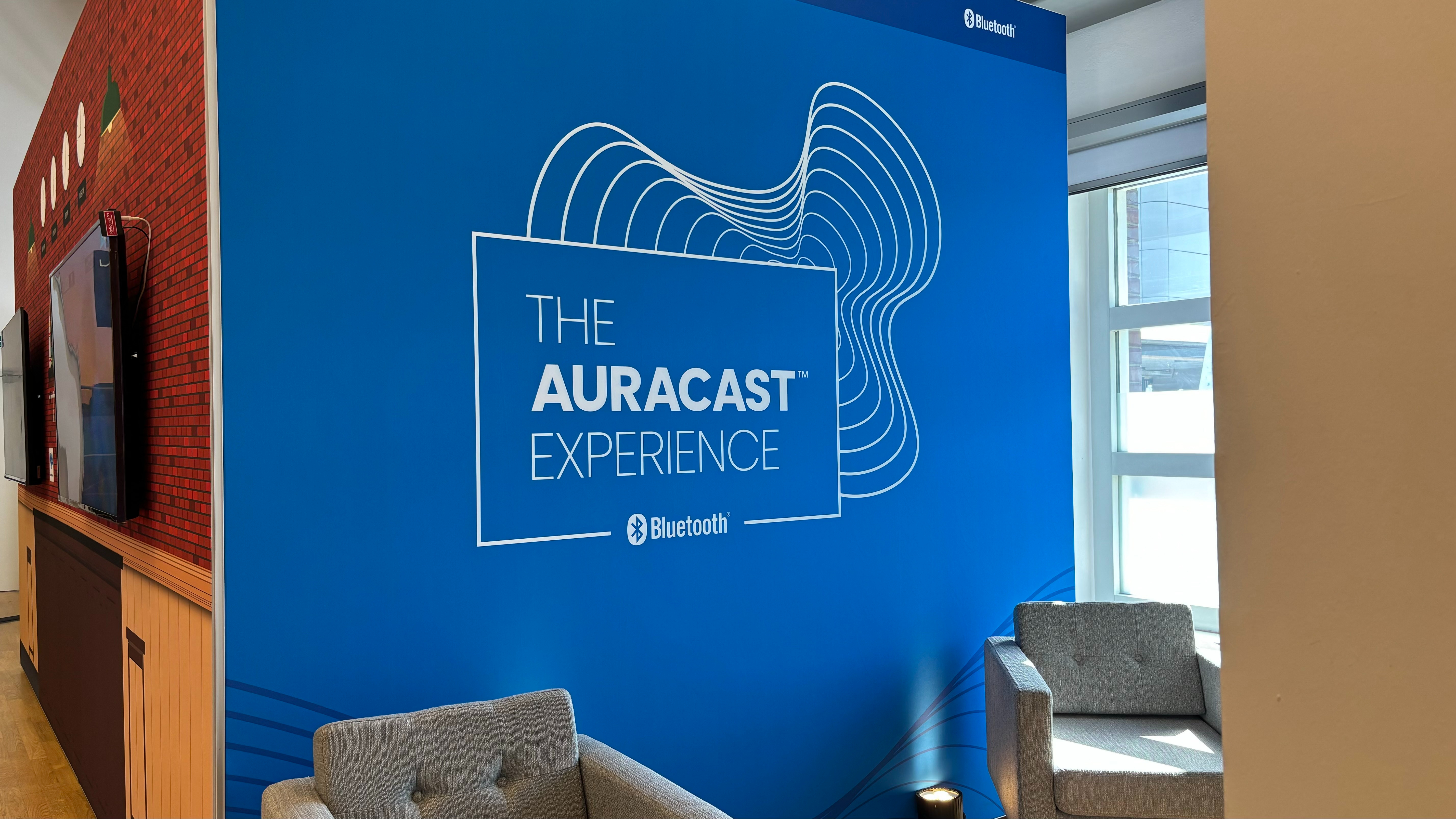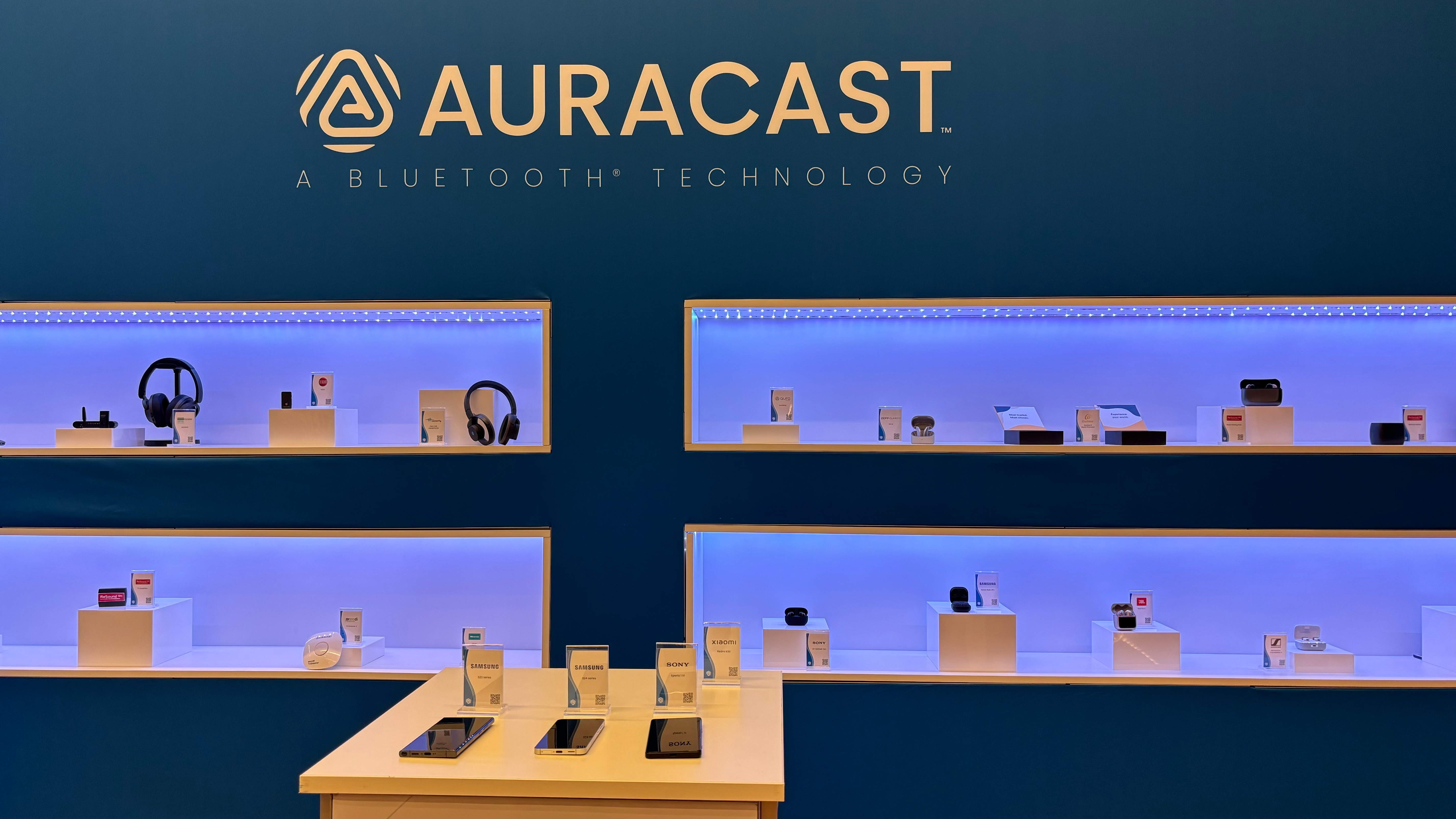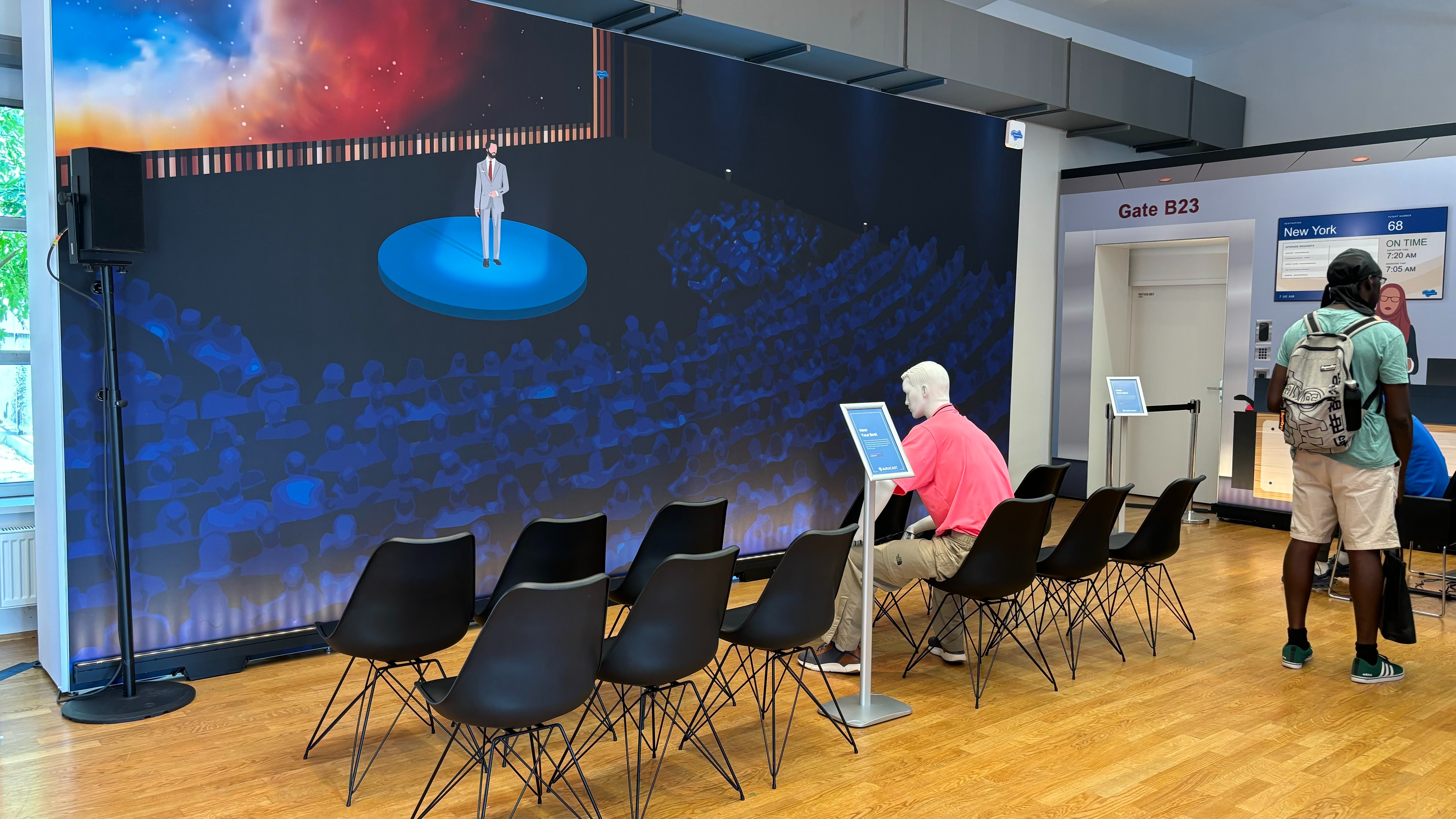
There are a lot of gimmicks out there at the moment, especially within the realm of personal audio tech. I'm fine with people craving spatial audio if that's their particular flavour of coffee, but I draw the line at the (in my opinion) superfluous deployment of head tracking from a new pair of wireless headphones. I'm all for different modes of noise cancelling, but bass-boosting buttons? Give me a break.
Auracast, though, feels like the real deal to me, and as a transformative tech it seems like the sort of thing that could have a legacy that goes far beyond the rather personal use of spatial audio, say. It's a tired old cliché, but this time it could well be justified: Auracast may be a genuine game-changer.
We've sampled the tech before. One of the first demos I visited as a young (ish) and up-and-coming tech journalist was during a visit to Qualcomm's offices in Cambridge, a small part of which included the company eulogising about the potential uses of spatial audio. I was there to test a new wireless protocol for low-latency gaming, yet Qualcomm's eulogising over Auracast was the thing that caught my attention. I'm not the only one: my colleague Becky Roberts went ears-on with Auracast last year, positing that it "will no doubt revolutionise audio sharing" in the future. Not for the first time, she might well be right.
What is Auracast?
Before we get into my experience of the clever tech at this year's IFA expo, let's have a quick refresher on what Auracast is, what it does and how it could be implemented in the future. Essentially, it's an audio-sharing protocol that allows for a near-infinite number of Bluetooth LE Audio-supporting devices to receive audio from compatible transmitter sources. That could be anything from TVs to PA systems, letting users simply choose which audio stream they want to listen to via a centralised platform baked into their phone's operating system or via an app.
For Auracast to function properly you'll need the source transmitter and the receiver (usually a pair of headphones) to support LE Audio, the Bluetooth standard required to deliver it. Products which support Bluetooth 5.2 can support Auracast via a quick and easy software update, whereas all Bluetooth 5.3 devices will be able to handle both LE Audio and Auracast as standard. Companies and manufacturers are already starting to implement Auracast as a way of sharing audio from one device to another, letting you connect two compatible portable speakers, such as the JBL Xtreme 4 or a pair of JBL Go 4s, as part of a daisy chain.

Time for a demonstration
What that means, in essence, is that you should be able to connect any Auracast-ready device to any source putting out the compatible stream and opening up your audio world no matter where you are or what you're doing. Our demo gave a nice example of how this would work in an ideal world: first, we were handed a pair of Sennheiser Momentum True Wireless 4 earbuds and a compatible smartphone and then guided around a series of setups and locations which simulated how the tech would work in practice. Onto the smartphone was preloaded a list of broadcasts corresponding to the setups which could be tuned into the same way you'd select your current Bluetooth devices, such as headphones and Bluetooth speakers, from your smartphone or source player.
Our first location was a simulation of a busy airport bar, conjured up using a small wall adorned with some pictures of alcoholic beverages and a pair of TVs playing two separate looped broadcasts: one of 2022's Manchester City vs Aston Villa title decider and one of an NBA game, both of which could be tuned into separately by simply selecting the stream on the provided smartphone and having the audio beamed to your wireless buds. This is a concept that I like, as not only would you be able to hear the commentary properly through your earbuds, but it would also negate the need for landlords and other proprietors to whack up the volume on the Exeter City vs. Burton Albion match to the chagrin of those punters not interested in the trials and tribulations of third-tier English football.
The demo then took us through a faux airport in which tannoy announcements could be heard through the earbuds, even when you're tuned into a different stream, meaning that presumably your boarding call will simply take over duties from the bar's TV commentary and interject with important flight info. Again, useful for people with hearing difficulties or airheads such as myself who tend to assume that all public announcements are being broadcast for fun rather than because they have important info which might actually be useful to me.

Airports aside, Auracast also promises to be useful for more curated spectacles and events. Rather aptly, speakers making keynote presentations or even performers such as stand-up comedians (it could happen) would be able to have their voice broadcast to the crowds via Auracast, and while a microphone tends to take care of amplification for a general audience, listeners with hearing difficulties would undoubtedly appreciate the clarity and control facilitated by having a direct stream to a pair of earbuds or headphones.
This isn't a hypothetical benefit, either. I also managed to find the time to speak to a representative from ReSound GN at IFA, one of Jabra's sister companies and a leading maker of hearing aids, who effusively proclaimed that Auracast would be a huge deal for people with hearing problems, with many manufacturers already looking to implement the tech into their assistive devices. Even if you don't have such issues, the idea of being able to tune into a broadcast that might otherwise be drowned or obscured by environmental background noises makes perfect sense.
What's even more exciting is how agnostic and therefore potentially open the protocol could become. Part of our demonstration involved the Sennheiser Momentum True Wireless 4 hooking up to Auracast via the JBL Xtreme 4, hinting that you can get your earbuds to latch onto separate products from different brands and circumvent the original source player altogether. Most daisy-chaining tech tends to work only within a given ecosystem, such as JBL's old PartyBoost functionality, but connecting across manufacturers via a unified platform makes life so much easier.
The future of audio sharing?

Are there any drawbacks? Well, while connecting across brands into a unified system is undoubtedly attractive, Auracast requires said companies to have access to and compatibility with the tech in the first place. JBL and Ultimate Ears (see the new UE Miniroll Bluetooth speaker) have been early adopters, but will we get to a point where every TV, PA system and pair of consumer headphones can tune into one another seamlessly into a homogenised network? That's a tall order. Many products are ready for Auracast use, such as the Cambridge Audio Melomania M100 earbuds, but many more, for now at least, are not.
Older devices naturally won't support Auracast, either, meaning that brands will increasingly need to update their products to include the chips which support the technology, many of which are produced by the likes of Qualcomm and Broadcom. Would Apple be willing to make its products compatible with Auracast, or would it go down a different route with its own bespoke tech, leading to the similarly ecosystem-dependant situation we have in our smart homes but on a larger scale? No one wants to be told that they can't connect to a public service announcement because they don't have a compatible device.
I hope Auracast takes off, though. So often we have been promised an Internet of Things-type world in which we are connected not only to one another but also to the interactive environment around us (if you've ever played Watch Dogs you will know what I mean), yet that promise hasn't quite materialised. A world in which we can connect to audio and/or audiovisual sources through the touch of a button via a unified platform is a dream of the future – let's see if Auracast lets it become a reality.
MORE:
I went ears-on with Auracast, an exciting Bluetooth feature set to revolutionise audio sharing
What is Auracast? And when is the revolutionary Bluetooth audio-sharing tech coming?
What are the best Bluetooth codecs? aptX, AAC, LDAC and more explained
IFA 2024 news and highlights: the latest turntables, speaker systems, headphones, projectors and more







